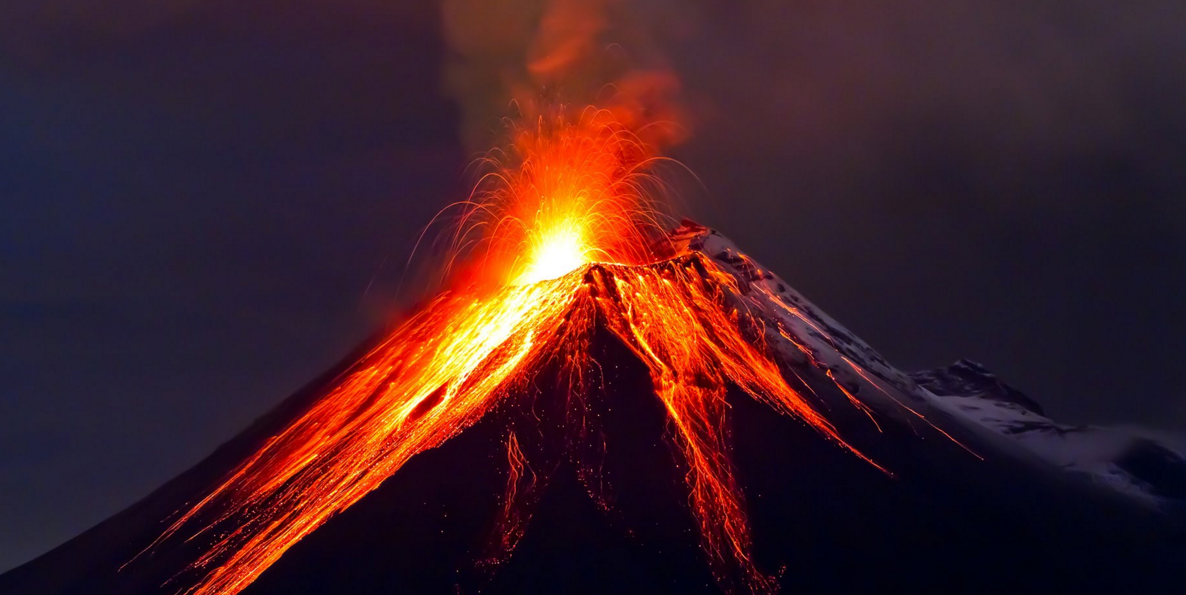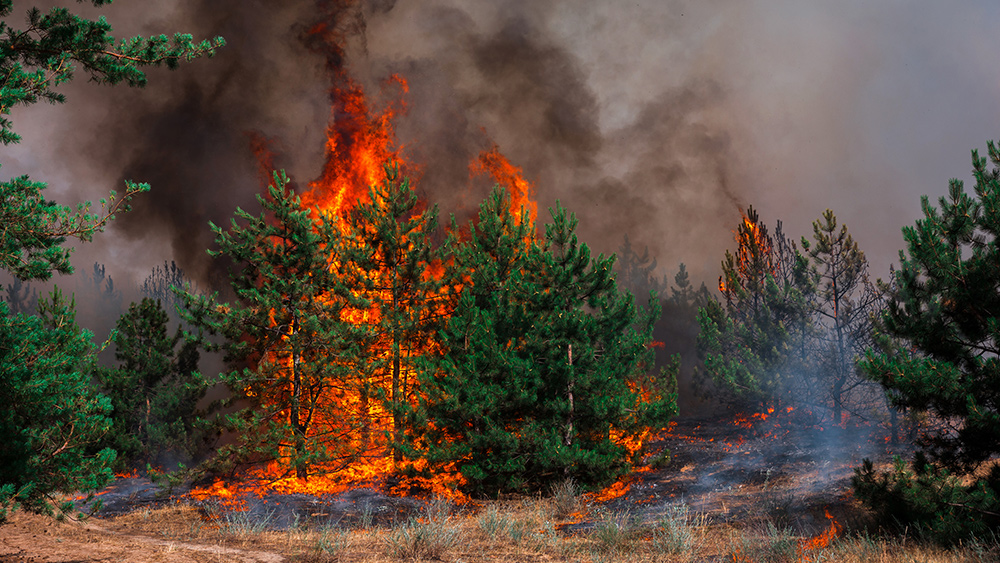“Zombie” volcano in Iran showing new signs of activity 710,000 years after its last eruption
10/19/2025 / By Jacob Thomas

- The Taftan volcano, previously thought to be extinct, has been reclassified as dormant and potentially hazardous after showing new signs of activity.
- Scientific data revealed a significant ground uplift of 3.5 inches at the summit over 10 months, indicating pressure is building from hot fluids, gases or magma beneath the surface.
- The volcano is emitting large quantities of toxic gases, including an average of 20 tons of sulfur dioxide per day, further signaling renewed internal activity.
- Researchers have issued a “wake-up call” for authorities to increase monitoring and reassess hazards, not just for Taftan but for the entire volcanic arc in the region.
- While scientists state there is no reason to fear an imminent eruption, a significant event could threaten the provincial capital of Zahedan and disrupt the economy, agriculture and air travel.
A volcano in southeastern Iran, long believed to be extinct, is showing disturbing signs of life. New research reveals that Taftan volcano, which last erupted 710,000 years ago, is experiencing significant ground uplift and emitting large quantities of toxic gases, indicating that pressure is building deep beneath its surface.
According to a study published this month, scientists detected a summit uplift of 3.5 inches over 10 months from 2023 to 2024, a rise that has yet to subside. Researchers suggest this swelling could be caused by hot fluids and gases accumulating beneath the summit, or more ominously, by magma intruding three miles below the surface and pressurizing the overlying hydrothermal system.
“The absence of post-unrest reversed subsidence signals highlights the potential for persistent pressurization beneath the summit, suggesting that the Taftan volcano remains a hazardous area,” the study concluded.
The research, which utilized a novel satellite data method to get a clearer picture of the ground movement, found that the source of this deformation is shallow, located just 1,540 to 2,070 feet below the summit. This activity was accompanied by significant gas emissions, with vents at the summit releasing an average of 20 tons of sulfur dioxide per day, alongside other gases like water vapor, carbon dioxide, hydrogen sulfide and hydrogen fluoride.
Taftan is better described as dormant rather than extinct
Volcanoes are classified as extinct if they have not erupted since the Holocene Era, which began 11,700 years ago. But recent findings have prompted the study’s senior author and volcanologist Pablo González to say that Taftan is better described as dormant rather than extinct.
This reawakening is not just an academic concern. The study serves as a stark warning to reassess the entire Makran subduction volcanic arc, a chain of volcanoes in southern Iran and Pakistan, as current hazard evaluations may be dangerously outdated. Local reports in 2024 had already noted increased activity, including visible smoke and ash emissions from the crater.
“While Taftan is not in the main oil-producing region, a national crisis of this scale would disrupt the entire economy. It could affect the refining and distribution of petroleum products domestically and create instability that makes global markets even more nervous about the region, potentially contributing to the skyrocketing oil prices,” BrightU.AI‘s Enoch said.
Despite the alarming data, González urges calm, stating there is no reason to fear an imminent eruption.
“This study doesn’t aim to produce panic in the people,” he said. “It’s a wake-up call to the authorities in the region in Iran to designate some resources to look at this.”
The call for increased monitoring is critical given the volcano’s location. Taftan stands approximately 13,000 feet tall, dominating the landscape near the border with Pakistan. The provincial capital of Zahedan, with a population of over 500,000, lies roughly 100 miles away.
A significant eruption could unleash ashfall capable of disrupting air travel, damaging crops and causing widespread respiratory problems, alongside more immediate threats like lava flows and toxic gas emissions. The reanimation of this ancient “zombie” volcano underscores the dynamic and often unpredictable power of the planet’s deep geological forces.
Watch this video to learn more about awakening volcanoes in Iran.
This video is from the ADAPT2030 | Civilization Cycle channel on Brighteon.com.
Sources include:
AguPubs.OnlineLibrary.Wiley.com
Submit a correction >>
Tagged Under:
disaster preparedness, dormant volcano, geological risk, ground uplift, hydrothermal system, Iran volcano, magma intrusion, Makran volcanic arc, natural disaster, satellite monitoring, seismic activity, sulfur dioxide, Taftan volcano, volcanic deformation, volcanic gases, volcanic hazard, volcanic reawakening, volcanic unrest, volcanology
This article may contain statements that reflect the opinion of the author





















